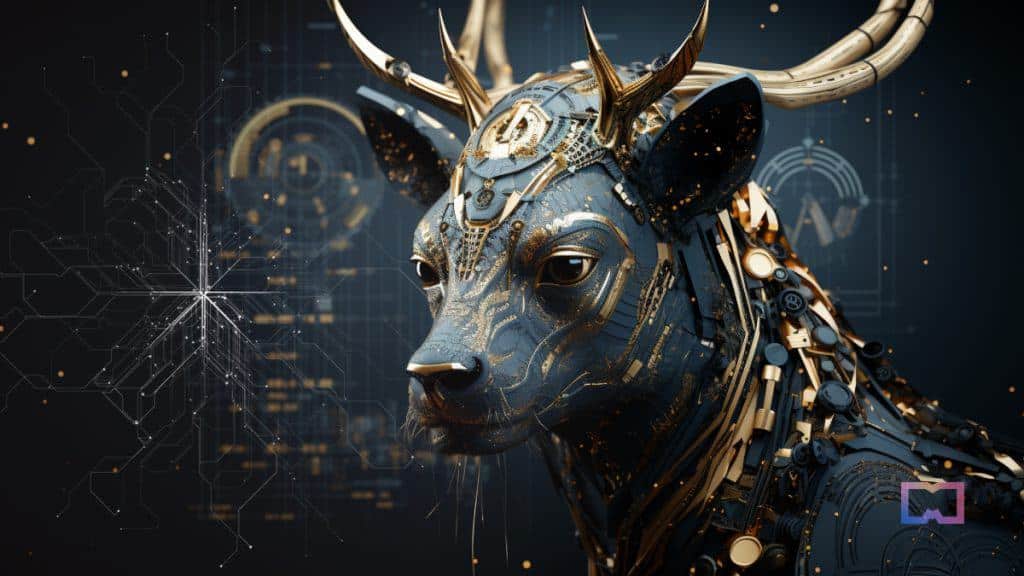AI Can Now Decipher Ancient Languages, Animal Communication and Plant Signals


In Brief
AI can now decipher ancient texts and cuneiform, with advanced systems like Ithaca improving text restoration, geographical attribution and chronological dating.
The technology extends its transformative impact to animal communication, recognizing their unique dialects.
Artificial intelligence also plays a critical role in decoding plant communication, helping agritech professionals monitor, diagnose, and optimize plant growth.

For generations, archaeologists have grappled with the formidable task of deciphering ancient languages and texts. However, a new era has dawned as researchers employ artificial intelligence to swiftly translate these ancient writings into English. In this article, we’ll delve into the versatile roles AI plays, from decrypting ancient scripts and unraveling the enigma of animal languages to peering into the cryptic world of plant communication.
A Digital Revolution for Decoding Ancient Texts
Last year, a groundbreaking AI system known as Ithaca was introduced. Ithaca, an advanced deep neural network, serves as a valuable tool for studying ancient Greek inscriptions, which have often been damaged, displaced and shrouded in uncertainty over the centuries. By excelling in text restoration, geographical attribution and chronological attribution, Ithaca offers epigraphers and historians an invaluable resource.
Ithaca’s architecture emphasizes collaboration, decision support and interpretability, resulting in a significant improvement in accuracy. Alone, it achieves 62% accuracy in text restoration, but when historians use it, their accuracy soars from 25% to 72%, showcasing the powerful synergy between AI and human expertise.
Ithaca can accurately attribute inscriptions to their original locations (71% accuracy) and date them to within 30 years of their true age, shedding new light on the history of Classical Athens and contributing to ongoing debates in ancient history.
AI systems such as Ithaca have the capability to unleash a collaborative synergy between artificial intelligence and historians, fundamentally reshaping the methodologies applied to our exploration and documentation of one of the most momentous eras in human history.
Translate Ancient Texts to English with AI
To illustrate how Ithaca was implemented, let’s consider Cuneiform as a case study.
Cuneiform, one of the earliest writing systems in human history, holds a vast trove of historical information within clay tablets. The Oxford Academic report suggests that “hundreds of thousands of such texts were found over the last two centuries, most of which are written in Sumerian and Akkadian.”
These inscriptions document the multifaceted aspects of ancient Mesopotamia, from politics to economics. However, the majority of these texts have remained untranslated due to their sheer volume and the limited number of experts available to decipher them.
Ithaca performed accurate translations from Akkadian to English from cuneiform glyphs or transliterations. The model’s strength lies in preserving the genre and style of the original texts, making it particularly effective for texts with shorter lengths.
As digitized texts continue to grow, the model can evolve through further training, further enriching the understanding of ancient Mesopotamian culture and history.
AI Can Decipher Herculaneum Scroll
Last week, a 21-year-old computer science student, Luke Farritor, has won the ‘first letters’ prize in the Vesuvius Challenge by successfully deciphering the first legible text from a carbonized scroll recovered from the ancient Roman city of Herculaneum.
The scroll had remained unreadable since the devastating eruption of Mount Vesuvius in AD 79, which also buried Pompeii. This achievement opens doors to uncovering numerous texts from the only intact library to survive from Greco-Roman antiquity.
Farritor developed a machine-learning algorithm that identified Greek letters on several lines of the rolled-up papyrus, including the word ‘purple’ (πορϕυρας). As nature explained, he “used subtle, small-scale differences in surface texture to train his neural network and highlight the ink.”
The breakthrough not only excites scholars and papyrologists but also promises to revolutionize our understanding of ancient history and literature. Until now, only fragments of these scrolls have been studied, containing Greek texts related to the Epicurean school of philosophy.
The Vesuvius Challenge, which offers substantial rewards for reading these scrolls, aims to encourage further decoding, making use of artificial intelligence and machine learning to reveal the invisible library of ancient texts.
AI Can Understand Animal Language
Besides deciphering ancient languages, researchers are also harnessing AI to decode animal communication, from New Caledonian Crows crafting tools to sperm whales using codas to identify one another.
AI models, trained on vast quantities of animal data, can reveal patterns and nuances in animal sounds and behaviors that were previously hard to discern. According to Scientific American, AI technology not only has the potential to facilitate better understanding of animal emotions and social structures but also enhance conservation efforts.
To study of sperm whales’ codas, researchers utilized AI to expedite the translation process. They tested the concept by inputting scientist Shane Gero’s recordings into a neural network, an algorithm that learns through data analysis. Remarkably, the neural network correctly identified specific whales from their codas with a 99% accuracy rate.
Encouraged by this success, the team set an ambitious goal: to listen to a large volume of ocean sounds and teach a computer to understand and communicate like a whale. Under the Project CETI, led by Gero, they plan to deploy an underwater microphone attached to a buoy to record the continuous vocalizations of Dominica’s resident whales.
AI Helps Animal Conservation and Pet Communication
Scientists believe that translating animal sounds could have a significant impact on endangered species. The Hawaiian Crow, or ‘Alalā’, became extinct in the wild in the early 2000s, and the remaining birds were placed in captivity for a conservation breeding program. To aid in the efforts to reintroduce the species to its natural habitat, Christian Rutz, who has previously studied New Caledonian Crows, is collaborating with the Earth Species Project to analyze the vocabulary of the Hawaiian Crow.
Rutz is compiling a record of the vocalizations used by captive birds and comparing them to historical recordings of the last wild Hawaiian Crows. This research aims to determine whether the birds in captivity have lost vital calls related to predators or courtship, potentially explaining the challenges of reintroduction.
Furthermore, researchers have discovered that orca whales use dialects unique to their pods while also being capable of communicating in various dialects with different species.
Additional AI revelations highlight that dolphins, akin to beluga whales and bats, have names bestowed upon them by their mothers, which they employ in their vocal exchanges. Even elephants exhibit signs of communication by using signals to alert their herd about approaching honeybees, which can be a potential threat if they enter their trunk or ears.
In addition, researchers at Tel Aviv University, led by Yossi Yovel, have utilized AI to study the vocalizations of Egyptian fruit bats. Over a period of two and a half months, they monitored and recorded the bats’ vocalizations, then used a voice-recognition program to analyze the sounds, correlating specific vocalizations with social interactions captured in videos. By doing this, they successfully classified a majority of the bats’ sounds. This specific research is part of the broader effort to decode animal communication, potentially allowing better understanding of pets like dogs and cats.
As AI models are developed to interpret animal communication, the scope of applications widens. It extends from decoding wildlife calls to analyzing domestic pet behavior, improving animal welfare, and aiding in the conservation of endangered species. Elodie F. Briefer, an animal behavior expert, has developed an algorithm to assess animal emotional states based on vocalizations.
However, the rise of AI in animal communication raises ethical concerns. The technology’s potential for misuse, from precision fishing to impersonating animal calls, underscores the need for best-practice guidelines and legislation to protect both animals and their ecosystems.
The AI-driven transformation of animal communication holds promise for unlocking shared experiences and emotions across species. As Scientific American wrote, researchers expect that while animals may not be saying “pass me the banana,” some universal expressions for feelings such as “grief” or “hunger” may emerge. This technology offers a new level of connection between humans and animals, shedding light on shared experiences and emotions.
As AI revolutionizes our understanding of animal communication, it offers a new perspective on our place within the natural world.
Can AI Communicate with Plants?
AI’s role in decoding and understanding plant communication extends beyond the animal kingdom. The technology offers a unique opportunity for agritech professionals to gain invaluable insights into plant health and ecological interactions.
AI can play a pivotal role in decoding and harnessing plant signals, enabling farmers and agritech experts to monitor, diagnose, and optimize plant growth more effectively. For instance, research shows that flowers can detect approaching bees and respond by producing sweeter nectar, demonstrating a form of communication between plants and pollinators.
By listening to the sounds plants emit, early signs of stress or disease can be detected, nutrient or water deficiencies diagnosed, crop quality assessed, and responses to environmental changes determined. This not only results in more precise and responsive plant health management but also contributes to increased crop productivity and reduced reliance on harmful pesticides and fertilizers.
Developing AI systems to decode and harness plant communication presents a range of complex challenges. Capturing subtle plant sounds in noisy environments is a fundamental obstacle, requiring the development of specialized sensors and microphones with high fidelity. In addition, interpreting these plant sounds, which are often intricate and context-dependent, demands robust algorithms for feature extraction, pattern recognition, and meaning inference.
Potential solutions include leveraging machine learning techniques like unsupervised, semi-supervised, or reinforcement learning. Deep learning methods, such as convolutional neural networks (CNNs), recurrent neural networks (RNNs), and attention mechanisms, can model intricate relationships within the data. Incorporating natural language processing (NLP), computer vision, and multimodal approaches further enrich the AI toolkit.
AI’s Role in Reviving and Preserving Languages
AI’s remarkable speed advantage is a significant asset in language-deciphering projects, as it can outpace human linguists in language translation and reduce associated costs. Many “dead” languages lack modern political significance, making it challenging to secure resources and funding. AI has the potential to make these projects more feasible and accessible, even for languages without vocal advocates.
AI tailored for this work can also decipher and translate ancient text on fragile and weathered surfaces, such as eroded stone tablets or crumbling clay, which might elude the human eye. Furthermore, computers can amass vast amounts of materials from scattered collections and archives worldwide, facilitating scholarly insights by uniting dispersed evidence.
While this work is academically intriguing, it also has real-world applications. In our current era of widespread literacy, languages are vanishing at an alarming rate. AI can assist in retrieving recently lost languages, aiding in their revival or documentation before they fade into oblivion. The effort to digitally preserve languages teetering on the brink of extinction is crucial, ensuring that their rich cultural heritage is not lost to the sands of time.
AI is transforming our understanding of the past, bridging the gap between ancient texts and our modern world. Tools like Ithaca resurrect forgotten languages and untangle historical mysteries, while AI deciphers the secret dialogues of animals, offering insight into their emotions and social structures. This digital revolution extends our connection to the natural world, allowing us to hear the unspoken languages of plants and wildlife. AI’s role in language preservation also ensures that endangered dialects won’t be lost to time.
Read more:
- Researchers have developed VR headset for mice
- What Tech Leaders Seek in Artificial Intelligence? Tech Visionaries Share Insights
- AI Learns the Language of Smell: Neural Networks Decipher Odor from Molecular Structure
Disclaimer
In line with the Trust Project guidelines, please note that the information provided on this page is not intended to be and should not be interpreted as legal, tax, investment, financial, or any other form of advice. It is important to only invest what you can afford to lose and to seek independent financial advice if you have any doubts. For further information, we suggest referring to the terms and conditions as well as the help and support pages provided by the issuer or advertiser. MetaversePost is committed to accurate, unbiased reporting, but market conditions are subject to change without notice.
About The Author
Agne is a journalist who covers the latest trends and developments in the metaverse, AI, and Web3 industries for the Metaverse Post. Her passion for storytelling has led her to conduct numerous interviews with experts in these fields, always seeking to uncover exciting and engaging stories. Agne holds a Bachelor’s degree in literature and has an extensive background in writing about a wide range of topics including travel, art, and culture. She has also volunteered as an editor for the animal rights organization, where she helped raise awareness about animal welfare issues. Contact her on [email protected].
More articles

Agne is a journalist who covers the latest trends and developments in the metaverse, AI, and Web3 industries for the Metaverse Post. Her passion for storytelling has led her to conduct numerous interviews with experts in these fields, always seeking to uncover exciting and engaging stories. Agne holds a Bachelor’s degree in literature and has an extensive background in writing about a wide range of topics including travel, art, and culture. She has also volunteered as an editor for the animal rights organization, where she helped raise awareness about animal welfare issues. Contact her on [email protected].

















































